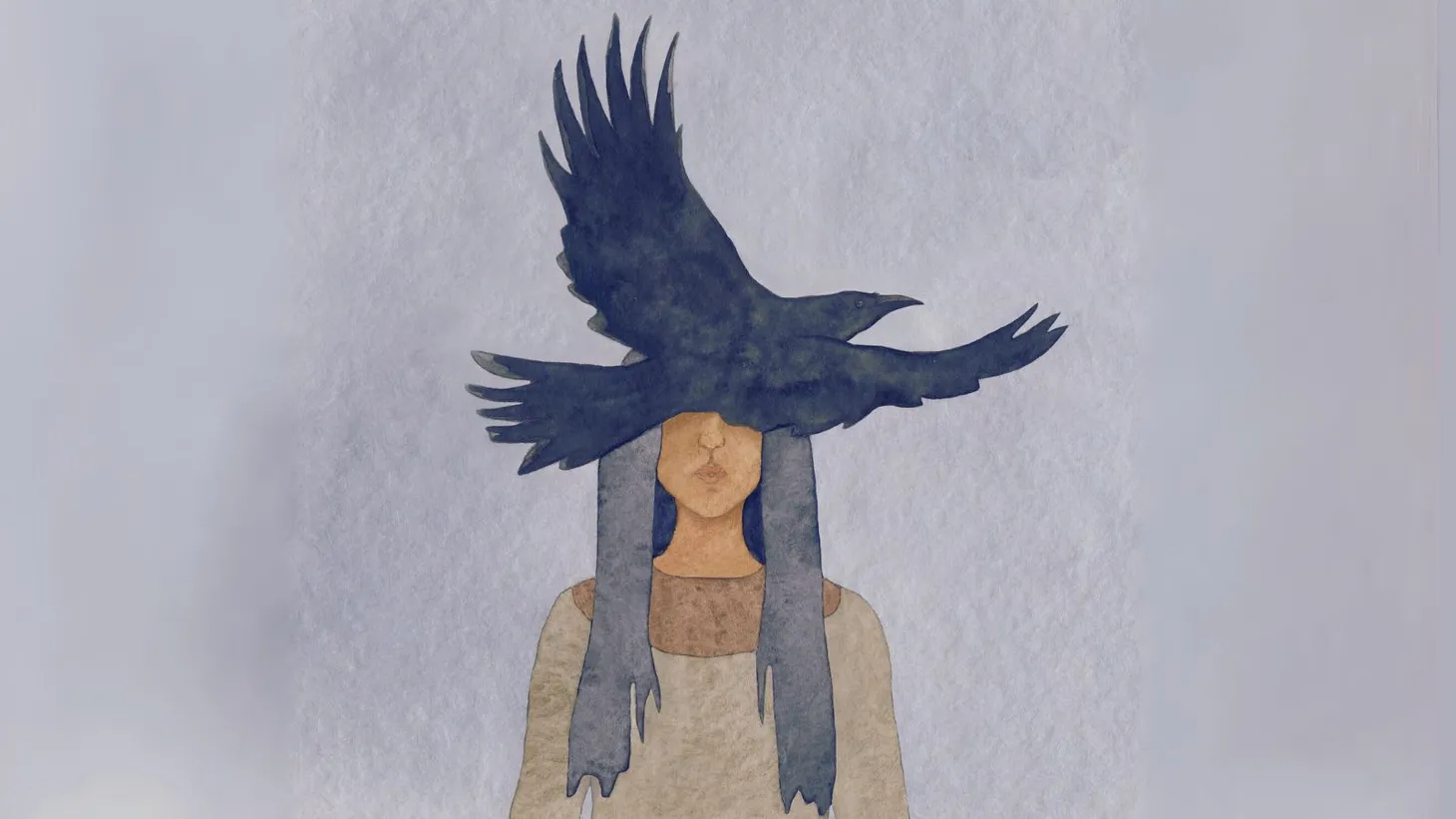What is this static? Old question for a new year
Thoughts on living with wonder in the midst of suffering

This piece has been a work in progress for the last two-plus weeks as the optimism of a fresh start, which a new year signals, intersected with disturbing events. Some from afar, others unfolding from my state (California), dealing with “apocalyptic” fires.Having survived a fire long ago that loved ones did not, my heart is with everyone affected.This piece kept evolving with complex concepts. It was like trying to ride a wild horse that took me to unplanned places then bucked me off. That’s writing. I thought about abandoning it. My instinct, however, says, let the horse out to play, so I hit publish.
Where the white lips of ocean
bite the sand, the only still
point—the wingbone of a gull.
— from my Journal, February 5, 2009
A new year, and I poke through old journals to see where I was and where I’ve been to get here—both the here of space and the here of time.
One step on this journey clearly included a local beach with a bleached bird bone.
Journals are my erratic form of a calendar, starting and stopping for reasons sometimes captured within them, more often lost to the pages of life.
As you move into this new year, what will your calendar hold?
What’s on your January mind?

Salt and water wash
the bone, sand sinking all
around it, a strange embrace.
— continued from my Journal
January draws its name from the Roman god of beginnings and transitions, Janus, with his two faces, one looking back, the other, forward.
The start of a new year—random really. I mean, who created the year, the month, the week?
Who decided our beginnings and our thresholds to whatever’s next?
The human psyche, of course, curious, creative, and ever wanting to control, evolving over time.
Diverse cultures developed diverse calendars.
The Mayans and Aztecs each used two or three different calendars. These temporal maps reflected their understanding of solar, lunar, and cosmic events and offered guidance for rituals and deciding, for instance, when to plant or go to war.
These calendars also spoke to shorter and longer spans of time, marking each person’s tentative place, a notch, between ancestors and descendents.
The Sumerians, Egyptians, Hebrews, Chinese, Persians, Ethiopians, Hopi, and so many other peoples created their own way of negotiating the passage of time.
Many, like the Celts, have seen time as circular, a repeating and interconnected flow. Wait, their calendars say, what’s old will be new again.
How different from today’s’ prevailing view of time, giving an urgency to progress, every moment insistent, separate, and irreversible.
The ancient Greeks distinguished the quality of time, "Kairos,” from its quantitative nature, "Chronos,” focusing more on meaningful moments than the march of minutes. They even varied the length of hours to reflect more light seeping in to their summer days.
Who wouldn’t like a longer lunch hour in July?
Today, there’s still more than one calendar, one history, one way of watching the hours wash by.

The bone, the sea, the sand.
Under a grey sky, only shadows
missing from this scene.
— continued from my Journal
Time, the word itself, has ancient roots in the concept of “to divide.” How very human.
Anyone feeling a divided-ness these days?
The first division was light from dark, the sun spreading its rays, outstretched and beneficent, the dark horizon later consuming it.
It might have seemed terrifying to long ago clans, so vulnerable and short-lived. Until the sun returned, and you, a fledgling Homo sapiens with your simple vocabulary, realized, “I’m still here.”
Time began before you had a word for it, in the simplicity of day followed by night, that physical fact repeating itself, creating a tempo for each brief being to live by, predictable and comforting.
Light again, out of that mountain, forest, plain, or sea. “Yes, I’m still here.”
You’d lived to fight another day.

Above, a falcon drifts,
wings wide, barred belly full,
the beached bone, clean and
hollow, telling an old story.
—continued from my Journal
We do a lot of that, fighting. War with a big ‘W’ out there, and war with a little ‘w,’ personal and private.
When it comes to conflicts, we want to believe we can separate the mean-spirited and belligerent among us, from the kind-hearted and peaceful. But there’s an uncomfortable glitch, explained so well by Nobel Prize-winning writer, Aleksandr Solzhenitsyn,
“If only there were evil people somewhere insidiously committing evil deeds, and it were necessary only to separate them from the rest of us and destroy them. But the line dividing good and evil cuts through the heart of every human being. And who is willing to destroy a piece of his own heart?”
— from his book, The Gulag Archipelago
Hard to admit, but who among us has never been wronged as well as wrong?
Still, let’s not self-destruct. Each of us is a walking duality, the luminous and the murky, dwelling within.
We actually need these dueling parts.
Ultimately, it’s not so much about good and evil, but the more mundane, moment-by-moment vacillation between joy and suffering. That’s where the little ‘w’ war happens.
Thich Nhat Hanh—global spiritual leader, poet, and peace activist—put it this way,
“On one hand we need to be in touch with what is wonderful because that will nourish us. And on the other hand, we have to be in touch with our suffering so that we can understand, love, and transform.”
— from his book No Mud, No Lotus

This wingbone is not a gull
and is every gull, the idea of a bird
and the bird.
— continued from my Journal
As the last year came to a close and this one begins, that vacillation between joy and suffering, the metaphorical lotus and mud, is feeling fast and furious.
A question formed out of it, unspoken, and seemingly older than me.
What is this static?
A strange question, I know, so let me unpack what I mean. I kept hearing this question as a tiny internal voice during the holidays.
What is this static?
It’s drifting with me now into this new year already fraught with so much bad news. As I write, countless people, near and far, are in serious distress.
There are the traumas unfolding right this minute, and there’s the telling about it all, the stories, pictures, and words, flashing from screen to mind.
They layer onto something vaguely persistent within each of us that we name differently.
A friend talks about her “background pain,” another bemoans the “anxiety monkey that lives in my head,” someone else shares how the “world keeps breaking my heart,” and more than one client resigns herself to her “forever-grief.”
A college student I once knew popped into my head along the way, her voice, wry but not yet jaded, “You know you’re grown up when you realize there’s always some part of life that sucks.”
Henry David Thoreau wrote how most of us “lead lives of quiet desperation.” Twentieth century philosophers and psychologists gave us “existential angst.”
The Buddha taught about the persistent dissatisfaction with the nature of life.
St. John of the Cross called it the “dark night of the soul” in his 16th century poem, “Noche Oscura del Alma.”
The Lakota people have their traditional, sacred, spiritual rite of Hanbleceya, meaning ‘Crying for a Vision,’ poignant and accurate.
I think in questions.
What is this static?
Why this interference with inner peace? How to deal with the little ‘w’ war, that internal struggle, with a brain trained to look for danger, and so often, suffering?

A raven, sun slivered
on her feather tips—one quick
black stroke, and she rises,
gull bone in her beak. If she
calls out, she’ll lose the music
of wind through the hollow.
—continued from my Journal
As an astrophysics nerd, one of my beloved discoveries is that the universe “hums.” Some say, “hiss.” Scientists, explaining it to non-scientists, refer to it as as “static”—the background noise of the cosmos.
Anyone who grew up in the the analog world of a television with rabbit ears splayed wide or a gangly-ugly antenna on the roof, knows static, that ‘snow’ hazing up the screen as you tried to tune in Bonanza or Bewitched.
About 1% of it was, and remains, static from the earliest sparks of the universe—technically known as cosmic, electromagnetic radiation—an ancient energy, a form of light we can’t see.
I know, cool, right?
Alas, “the hum” isn’t naturally audible to you and me, because outer space is a vacuum and we need air or water—some molecular medium that can be made to vibrate—to produce sound. Clever scientists, though, have been able to convert these cosmic frequencies into acoustic waves.
Voilà, the static, the hiss, the hum. It’s everpresent … beyond, beneath, around, within.
Sonification created by Mickey Hart from data describing cosmic microwave background information. Data Source: Berkeley Center for Cosmological Physics
The funny thing about static is that it means stillness and stability, which seems such a good thing. Yet, the ‘noise’ it creates is unwanted, interfering with something else we desire. A crisp picture, a pure tone, clarity.
As I think about all of this, the science of it, the poetry of it, there is only one conclusion.
I am the static. You are the static.
We each make our own noise.
Our minds brim with the constant background hissing of converging thoughts, countless swift images, old voices, doubts and fears, random memories, transient moods.
Our minds are trying in their own fumbling and flawed ways to make sense of a complex, chaotic, and quickly moving world, which is utterly impossible.
Hello, fellow lotus blossoms, welcome to our shared mud.
When people keep repeating the quotes and memes that say, “Grief is forever” or “Pain always persists,” I cringe, because for most (that is, with no constraining physical or mental health conditions), it’s just not true, biologically, psychologically, historically, or culturally.
Grief or pain or anxiety or despair for the world, are not really permanent states of being. We’re not meant to stagnate in those experiences.
Yes, loss is forever, and whatever literally happened to you does persist as part of your personal history.
Your reaction to those facts of your life, however, the mental and emotional energy they ignite within you, that’s your static.

Who says a bone
cannot fly? A little wind comes,
sand lifting into the air,
the sea swells, a wave breaks,
foam, as if many white bodies,
searching the shoreline.
— continued from my Journal
As I consider the nature of static through my geeky-science lens, it dawns on me.
Static, too, is not a state, it’s not about stagnation.
Static is a signal.
What’s a signal?
Staying with our electromagnetic point of view, physically it takes the form of a wave that’s stable and unchanging while simultaneously in motion and constantly changing, technically, oscillating.
It’s not as paradoxical as it sounds. If we could see the wave, we’d notice it arcing up and arcing down, or vibrating right then left, back and forth. Yet, it’s still the same wave 〜〜〜.
What’s the purpose of a signal? Simple, really.
In the electromagnetic sense, a signal is a wave that carries information.
In the human sense, a signal is a gesture, sound, or action communicating a message to the person who sees, hears, or senses it.
So, however you look at it, a signal is trying to tell us something.
That means static isn’t interference, or noise to be avoided, but rather a signal waiting to be understood.
Okay, time for a different question.

Sea pulls sand, soft then
firm, every bird track
hidden. What else
is here?
— continued from my Journal
What is this signal trying to tell me, tell you, tell us? That’s the better question.
The cosmic hum says to scientists and stargazers, “Pay attention to me, I am part of the mystery of existence, take a closer look.”
What if our inner hum is saying to each of us, “Pay attention to me, You are part of the mystery of existence, take a closer look”?
Here’s where the other aspect of a signal comes in, tuning.
Ever listen to the radio in your car, and find yourself looking for a specific music, talk, or sports channel?
You can tap a button or some new-fangled touch screen to summon what you seek from among all the other channels, sifting it out of the chaos of sounds and static. There, that’s the one. You listen.
Ever cry to a song out of the blue? Argue with the voices on the talk show? Howl when you heard, “Touch down!”?
The radio found then sent you a signal and you not only heard it, you responded. Perhaps intentionally, though often, not.
The good news: You can tune-in what you want to listen to and how you want to respond. It doesn’t mean you’re oblivious to, or uncaring about, everything else going on around you
You’re simply choosing to tune-in to something clearer, purer, that’s specific to you, needed by you in this moment.

The waves rise, shaking their
wild white hair skyward, collapsing
into themselves, every curl,
empty and powerful.
— continued from my Journal
What am I and what are you, tuning in? Another helpful question.
We all swing between the joy of a star-filled sky and the suffering of a universe that’s mostly a void.
We are one being, with this one life, oscillating between light and dark. So, it’s not a tune once and be done.
Is your wave up, in wonder, or down, in despair?
If all you hear is staticy noise, distressing and unwanted, you may be stuck when you need to keep moving.
You may be fighting the wave, instead of riding the wave.
Time to tune, don’t you think?
Yes, sometimes tuning means leaning into what hurts or haunts, allowing and experiencing it—even honoring and being grateful for it.
Why? Because it’s a signal bearing a message you need to receive.
Spend time there. Listen and look for the message in the signal.
Ask, “What can I take from this that I need right now?”
But don’t stay there. Learn how to let it go, at least for awhile, since you will return again as surely as dusk follows dawn.
Learn to tune into what helps you move from static to clear signal, dialing yourself back into the music of joy (or at least a little lightheartedness) and wonder.

Call me wingbone of a gull,
so I may hear your voice,
whistling through me, know
what I was, who
I am.
— continued from my Journal
When you’ve brought yourself into that music, when it becomes bright and resonant, you become the music for a bit. That wonder, that joy, a lighthearted human.
Ride the wave while you can, holding open the promise that you are more essential than you may ever realize.
The static, the signal—it’s all about movement and meaning.
The universe may be a vacuum, but as the only known life forms within it, we don’t really live in that vacuum. We live within each other. Yes?
As we move into this space of time that most of our calendars call 2025, what if you hold on to another possibility?
You might be the song, the exact signal, someone else needs to hear.
The Wild Now
Get insights & stories for rediscovering life in the wild now.




